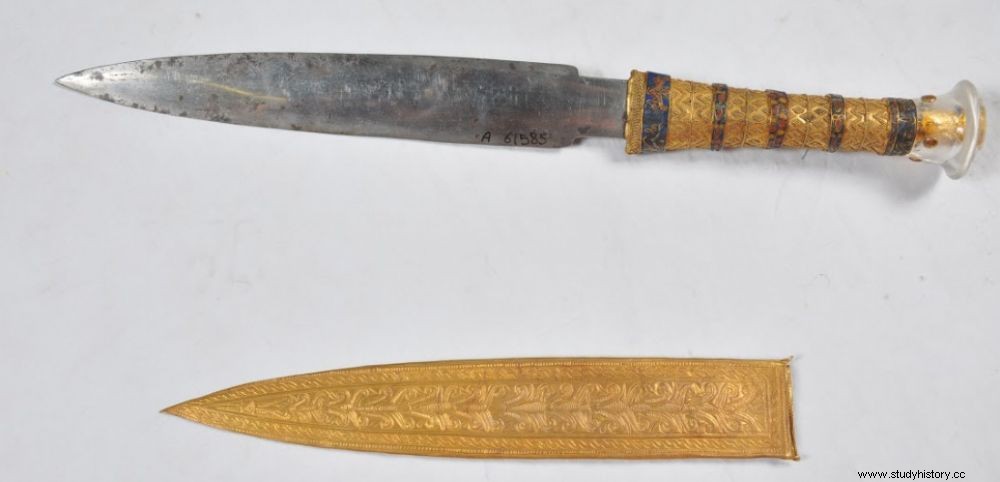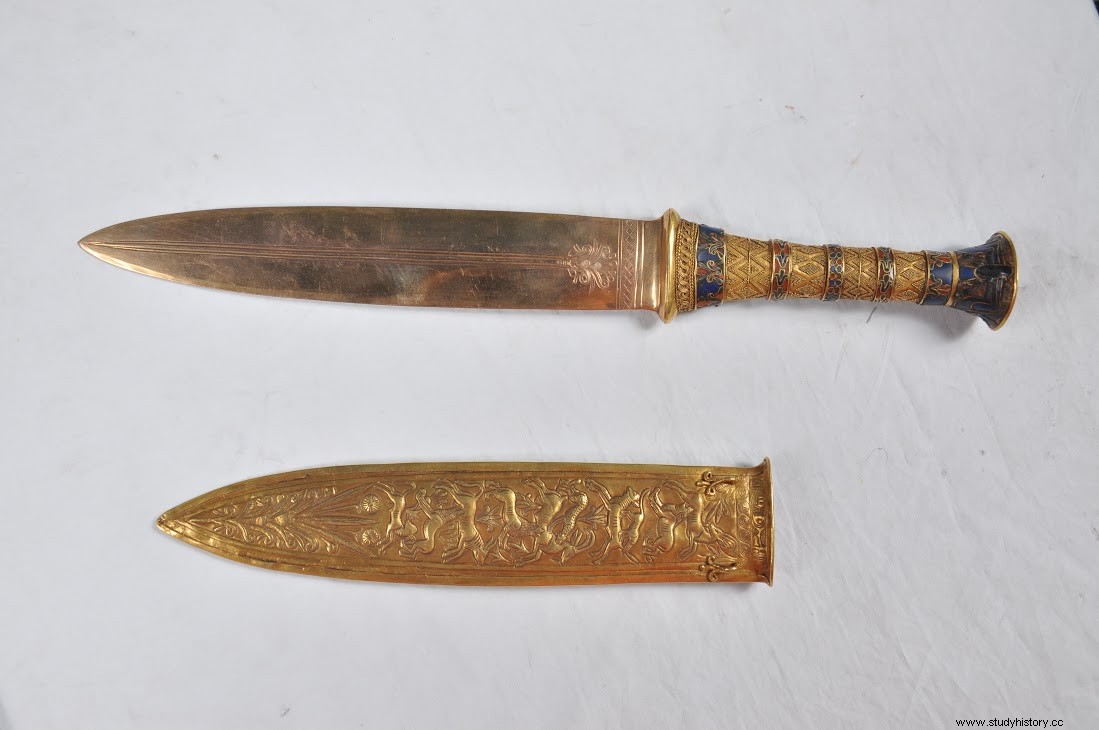 Dagger with an iron blade of meteoritic origin found on the remains of Pharaoh Tutankhamun. Length:34.2cm. © Egyptian Museum in Cairo.
Dagger with an iron blade of meteoritic origin found on the remains of Pharaoh Tutankhamun. Length:34.2cm. © Egyptian Museum in Cairo. SPACE. It's a royal jewel... alien! The iron blade of Pharaoh Tutankhamun's dagger - with rock crystal pommel and gold handle set with precious stones - could indeed come from outer space. This is what a geochemical analysis published in the journal Meteoritics and Planetary Science*, has just revealed. showing that the iron used to make it could have come from a meteorite. This prestigious piece was discovered in 1925 by Howard Carter and has since been on display at the Egyptian Museum in Cairo (Egypt) (see opening photo ). It was found in the bandages that swaddled the mummy of this famous ruler of the 18th dynasty along his right side.
It is by using non-invasive methods of X-ray fluorescence spectrometry* (X-ray fluorescence) that Italian researchers from the Polytechnic School of Milan, the University of Pisa, Turin, and their Egyptian colleagues from Cairo Museum and Fayoum University, were able to establish the composition of the iron blade (opening photo ). According to Daniela Comelli, from the physics department of the Polytechnic School of Milan (Italy), one of the co-signatories of the article joined by Sciences et Avenir , "the nickel concentrations and the (lower) amounts of cobalt, phosphorus, carbon and sulfur detected in the blade are typical of iron of meteorite origin" . Indeed, a presence of 10% nickel was recorded, where it is about 4% for terrestrial ore.
 A second dagger, this one with a gold blade, (photo attached) was found, it , deposited on the abdomen of the young pharaoh. © Egyptian Museum in Cairo
A second dagger, this one with a gold blade, (photo attached) was found, it , deposited on the abdomen of the young pharaoh. © Egyptian Museum in Cairo
The Egyptians seem to have attributed a very high value to iron
Did the Egyptians perceive these iron elements fallen from the sky and recovered in meteorites as divine sendings? Still, they seem to have attributed a very high value to this rare material because other precious objects of this composition have already been exhumed in Egypt. Thus, in a cemetery of the predynastic period located along the Nile, a prehistoric ornament composed of nine tubular beads had been unearthed in 1911, in Gerzeh, south of Cairo. After analyzing them in 2013, the researchers were able to establish that these beads were fashioned from iron of meteoritic origin around 3300 BC. J.C. "It is indeed the rate of nickel measured which makes it possible to confirm this origin" , had then explained to Sciences et Avenir Philippe Fluzin, Director of the Metallurgy and Cultures Laboratory, CNRS. The art of iron metallurgy has long been unknown to the Egyptians. It only started to spread around 1000 BC.
